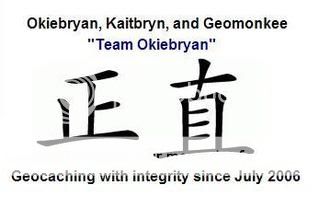Stonewall (now known as Frisco) is the second oldest town in the
Chickasaw Nation.
Shortly before the close of the Civil War, Robert Cochran opened
a trading post, or general merchandise store, on the south side of
the Clear Boggy Creek. At the close of the War in 1865 the store
was removed by its founder to the opposite side of the stream. This
establishment continued until about 1903 under the ownership and
management of various men.
At the time of the move across the river, Cochran gave this
place the name of "Stonewall" for General "Stonewall" Jackson, a
commanding officer in the Confederate Army during the Civil War.
Stonewall then became the county seat of Pontotoc County. Later, in
1878, William L. Byrd, former governor of the Chickasaw Nation,
moved here and established a general merchandise store. Later other
business concerns were established here.
From 1895 to 1900 in alternate years, a United States
Commissioner's Court was held here and in Center until the
Commissioner's Court was consolidated in a location at Ada.
The Chickasaw National Academy, consisting of a boarding school
for Chickasaw Indian children, was located about .5 mile east of
here, adjoining the north edge of the cemetery. One building was
destroyed by fire in 1874, and the other burned in 1880. The
cornerstone is still visible today.
A town stolen
In 1903 the Shawnee branch of the Missouri, Kansas and Texas
Railway was constructed from Atoka to Oklahoma City. This new
railroad touched a section of the county three miles due east of
Stonewall. A townsite was organized at this point by Otis B.
Weaver, Torn Hope, and Governor William L. Byrd, and a thriving new
town sprang up there without either a name or a post office.
On a bright moonlit night in the winter of 1903, under the
leadership of Date Crawford, an Ada attorney, and N. T. (Nick)
Hurd, a local business man, the post office at Stonewall was
hoisted upon wagon wheel trucks and moved to the new townsite,
lock, stock and barrel. The following morning, the new townsite had
a post office and a definite name.
Of course this left the "old Stonewall" without either a name or
a post office, but this did not last long. In 1905, the Oklahoma
Central Railway was constructed through "old Stonewall" from Lehigh
to Chickasha, Oklahoma. The residents of "old Stonewall" mistakenly
believed that this new railroad was a branch of the Frisco Railway
System, so in renaming the town they gave it the name of Frisco and
shortly a post office of the same name was established there.
During the Great Depression, the Oklahoma Central Railway ceased
to operate in 1933. The trackage and most of the housing properties
of the railroad were removed. All that remains of this once busy
little transportation line is the right of way, and Frisco without
railroad facilities dwindled from a once prosperous railroad town
to two small stores and a post office.
Another noteworthy item is that when the streets and city lots
were surveyed and official plats drawn, this place was still named
Stonewall. As a result, there is some confusion with legal
description of property located here. Even today, the proper and
legal way to describe real estate in Frisco is "Lot so and so,
Block so and so of Stonewall, now Frisco, Oklahoma, according to
the United States Government survey and plat thereof."
Look around town while you are here, and if you find a large
stand of Silver Maple trees, you have found the site of the old
residence of the late Governor of the Chickasaw Nation, William L.
Byrd. In about the year 1881, Governor Byrd went to Washington, D.
C. as a delegate to represent the Chickasaw Nation in official
matters of the Nation. While there, the Governor's attention was
attracted to the many beautiful Silver Maple shade trees that then
adorned the nation's capitol. Upon his return home he brought along
a number of Silver Maple seedlings, and replanted them upon his
property. These plants grew into huge shade trees which can yet be
seen about the old residence.

